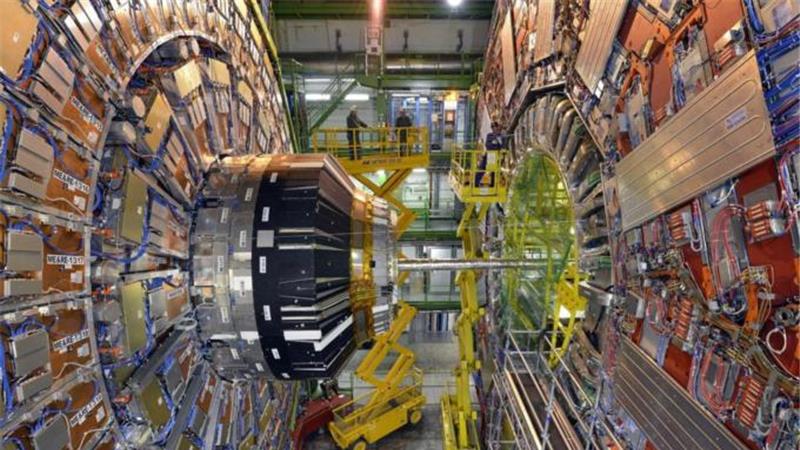

Chinese scientists have completed an initial conceptual design of a super giant particle collider which will be bigger and more powerful than any particle accelerator on Earth.

"We have completed the initial conceptual design and organized international peer review recently, and the final conceptual design will be completed by the end of 2016," Wang Yifang, director of the Institute of High Energy Physics, Chinese Academy of Sciences, told China Daily in an exclusive interview.
The institute has been operating major high-energy physics projects in China, such as the Beijing Electron Positron Collider and the Daya Bay Reactor Neutrino experiment.
Now scientists are proposing a more ambitious new accelerator with seven times the energy level of the Large Hadron Collider in Europe.
In July 2012, the European Organization for Nuclear Research, also known as CERN, announced that it had discovered the long sought-after Higgs boson - the "God particle", regarded as the crucial link that could explain why other elementary particles have mass - on LHC.
The discovery was believed to be one of the most important in physics for decades. Scientists are hopeful that it will further explain nature and the universe we live in.
While LHC is composed of 27-kilometer-long accelerator chains and detectors buried 100 meters underground at the border of Switzerland and France, scientists only managed to spot hundreds of Higgs boson particles, not enough to learn the structure and other features of the particle.
With a circumference of 50 to 100 km, however, the proposed Chinese accelerator Circular Electron Positron Collider (CEPC) will generate millions of Higgs boson particles, allowing a more precise understanding.
"The technical route we chose is different from LHC. While LHC smashes together protons, it generates Higgs particles together with many other particles," Wang said.
"The proposed CEPC, however, collides electrons and positrons to create an extremely clean environment that only produces Higgs particles," he said.
The Higgs boson factory is only the first step of the ambitious plan. A second-phase project named SPPC (Super Proton-Proton Collider) is also included in the design - a fully upgraded version of LHC.
LHC shut down for upgrading in early 2013 and restarted in June with an almost doubled energy level of 13 TeV, a measurement of electron volts.
"LHC is hitting its limits of energy level, it seems not possible to escalate the energy dramatically at the existing facility," Wang said. The proposed SPPC will be a 100 TeV proton-proton collider.
If everything moves forward as proposed, the construction of the first phase project CEPC will start between 2020 and 2025, followed by the second phase in 2040.
"China brings to this entire discussion a certain level of newness. They are going to need help, but they have financial muscle and they have ambition," said Nima Arkani Hamed from the Institute for Advanced Study in the United States, who joined the force to promote CEPC in the world.
David J. Gross, a US particle physicist and 2004 Nobel Prize winner, wrote in a commentary co-signed by US theoretical physicist Edward Witten that although the cost of the project would be great, the benefits would also be great.
"China would leap to a leadership position in an important frontier area of basic science," he wrote.
Gerard't Hooft, winner of the Nobel Prize in Physics in 1999, said in an earlier interview to Doha-based broadcaster Al Jazeera that the proposed collider, if built, "will bring hundreds, probably thousands, of top class scientists with different specializations, from pure theory to experimental physics and engineering, from abroad to China".
Source:China Daily